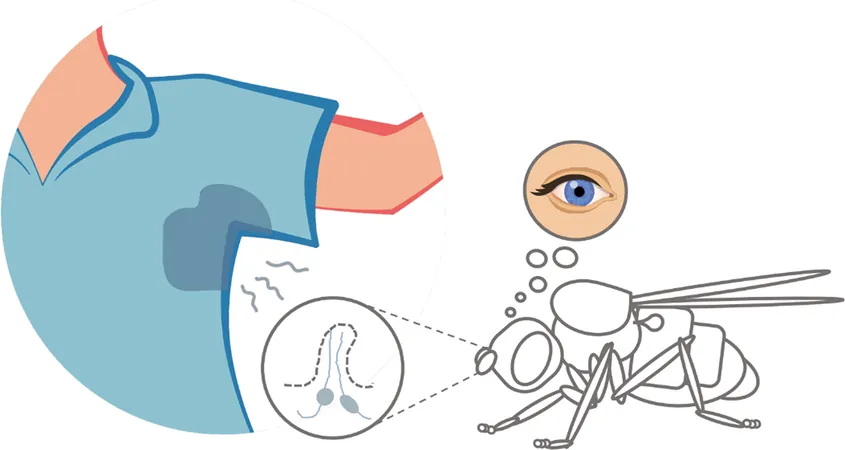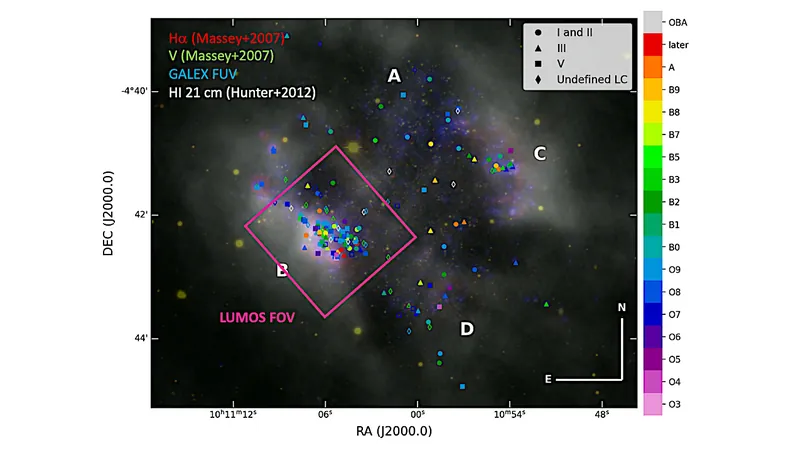
Unveiling the Secrets of the Variegated Fruit Fly: A New Player in Eye Worm Transmission
2025-06-02
Author: Ming
The Rise of Phortica variegata: A Zoonotic Concern
Drosophilid fruit flies, typically overshadowed in research due to their limited agricultural significance, are now drawing attention for a surprising reason: the variegated fruit fly, Phortica variegata. Originally from Europe, this fly has gained notoriety as a significant vector for Thelazia callipaeda, commonly known as the oriental eyeworm. This nematode, known to cause ocular nematosis primarily in Southeast Asian regions, has recently surged in Europe, turning public health concerns into an urgent matter.
A Unique Feeding Habit
P. variegata has an unusual diet, primarily feeding on the tears of various animals, including foxes, wild cats, and even humans. This peculiar behavior may contribute to its role in spreading T. callipaeda, as the fly's preference for mammalian tears positions it as a critical vector following the nematode's arrival on the continent.
Climate Change: Amplifying the Threat
The escalating impact of climate change has further exacerbated the problem. Warmer winters have allowed P. variegata to thrive, creating ideal conditions for the nematode to spread northwards. The findings suggest that as P. variegata's activity period increases, so does the risk of ocular infections among both humans and animals.
Adaptations in Olfactory Systems
Flies rely heavily on their sense of smell to locate food and mates. Studies indicate that P. variegata may have unique olfactory adaptations that enable it to navigate through its complex environment. Understanding these adaptations could lead to innovative strategies to control the spread of this vector.
Insights from Drosophila Melanogaster
When compared to other fly species, such as Drosophila melanogaster, P. variegata exhibited distinct olfactory responses. Just like D. melanogaster, which is attracted to overripe fruits due to specific fermentation volatiles, P. variegata seems to show heightened sensitivity to certain scents, including those emitted from decaying organic matter and mammalian hosts.
Challenges in Vector Control
Currently, no specific attractants or repellents exist for effectively managing P. variegata populations. Research into its olfactory mechanisms is still in its infancy, leaving public health officials with limited tools to combat this emerging threat.
Future Directions in Research and Control
This groundbreaking research has opened the door for potential studies to optimize vector control strategies. As we continue to unravel the olfactory preferences of P. variegata, insights gained could inform the development of targeted traps and repellents, ultimately protecting both animal and human populations from the zoonotic diseases carried by this intriguing fly.
Conclusion: An Urgency for Knowledge
As we grapple with the challenges posed by climate change and new health threats, understanding the role of vectors like P. variegata becomes crucial. This species may have the potential to alter the landscape of zoonotic disease transmission, thereby posing new risks to public health. Continued research could uncover vital control methods necessary to safeguard our communities.


 Brasil (PT)
Brasil (PT)
 Canada (EN)
Canada (EN)
 Chile (ES)
Chile (ES)
 Česko (CS)
Česko (CS)
 대한민국 (KO)
대한민국 (KO)
 España (ES)
España (ES)
 France (FR)
France (FR)
 Hong Kong (EN)
Hong Kong (EN)
 Italia (IT)
Italia (IT)
 日本 (JA)
日本 (JA)
 Magyarország (HU)
Magyarország (HU)
 Norge (NO)
Norge (NO)
 Polska (PL)
Polska (PL)
 Schweiz (DE)
Schweiz (DE)
 Singapore (EN)
Singapore (EN)
 Sverige (SV)
Sverige (SV)
 Suomi (FI)
Suomi (FI)
 Türkiye (TR)
Türkiye (TR)
 الإمارات العربية المتحدة (AR)
الإمارات العربية المتحدة (AR)